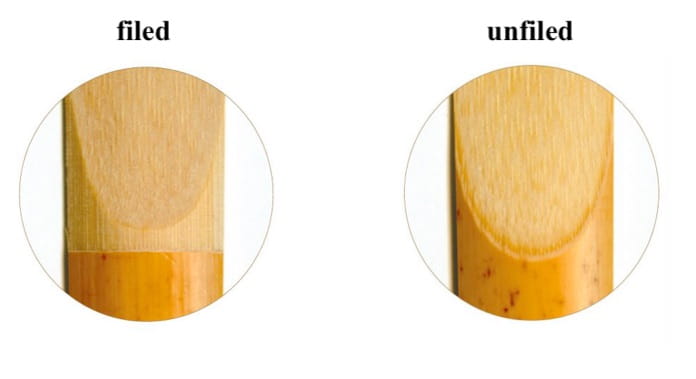Choosing The Best Reed: Clarinet or Sax
4th February 2021With so many different Clarinet & Sax reed types and strengths on the market it can be overwhelming. How do you know which make to buy? And how do you choose the right strength? In this blog (and video) we give some advice on choosing the best option for you…
The Basics
As explained in the video above; most players begin on softer reeds such as strength 1.5 or 2. Because of how these are made, with less cane in the heart and tip, they flex more readily and therefore play more ‘easily’. As you develop your embouchure your strength and support improves and commonly you’ll benefit from harder reeds. These will add more depth and core to the sound.
The ‘Correct’ Strength
Aside from variations in your experience and the mouthpiece you use (more on that later) you need to find the right strength for your playing style and experience. This starts with being conscious of your current set-up and if it feels too soft or too hard. If your reeds are too soft the sound will be quite thin and a little ‘scrappy’ especially in the far reaches of the instrument range.
If your current reed is too hard your sound may be very breathy and sound constrained and dull. A ‘correct’ strength reed will offer you just the right balance between resistance and vibrancy. Some players prefer something too blow ‘against’ with a slightly harder set-up and tighter embouchure control, others prefer a more free-blowing feel and relaxed embouchure.
The ‘Correct’ Type: Filed vs Unfiled
There are two main variations in ALL reed designs: Filed and Unfiled:

The Filed ‘French’ design features a secondary cut, usually straight across the reed below the main cut. These reeds also usually feature a thinner tip but thicker heart. They are best suited to mouthpieces with a gentle curved facing. Some examples of these mouthpieces would be:
- CLARINET: Vandoren B45, B40, 5RV, Selmer Focus, Selmer C85 120, Buffet Plastic models, Weinberg M1/M3, Reserve X5E/X10E/X15E, EV10E
- SAXOPHONE: Selmer S80/Concept, Vandoren AL/AP,
The Unfiled ‘American’ design features just the single cut which leaves more cane in the shoulders. To balance this cut there is less cane in the heart and more in the tip. These reeds suit mouthpieces with a more abrupt end to the facing curve. Some examples of these mouthpieces would be:
- CLARINET: Yamaha 4C/5C/6C, Vandoren BD Range, Vandoren M15/M30, Reserve Reserve X0/X5/X10/EV10, Backun Vocalise
- SAXOPHONE: Meyer, Otto Link, Vandoren V16/V5, Theo Wanne, Drake, Aizen, D’Addario Select Jazz, WoodStone
If you play Clarinet you can try out our French Filed Selection Pack or American Unfiled Selection Pack which allows you to test a range of models within each cut type.
The Mouthpiece Factor
As mentioned above, different reeds will also suit your mouthpiece better or worse depending on its facing curve design and the reed cut. One other variable which makes a big difference is not just the curve of the facing but the length. As a general rule (and with all other variants being equal) a shorter facing will make a reed feel harder and a longer facing will make a reed feel softer.
Most manufacturers explain their facing designs (or length at least) on their website or in their promotional material. This is important to know because a strength 2.5 reed will feel a lot harder on a short facing than it will on a longer facing, despite the strength being the same!

In Summary
It’s generally true that the more experienced the player the harder the reed. However, there are some slight caveats to do with the mouthpiece set-up. For example the same player would use a totally different strength if they were playing a short and close mouthpiece vs a long and open mouthpiece. i.e. The reed strength is not only linked to the players embouchure but also the equipment they are using.
Please do contact us if you have any questions or would like help choosing the ‘right’ reeds. Our team will be happy to advise based on your current set-up.